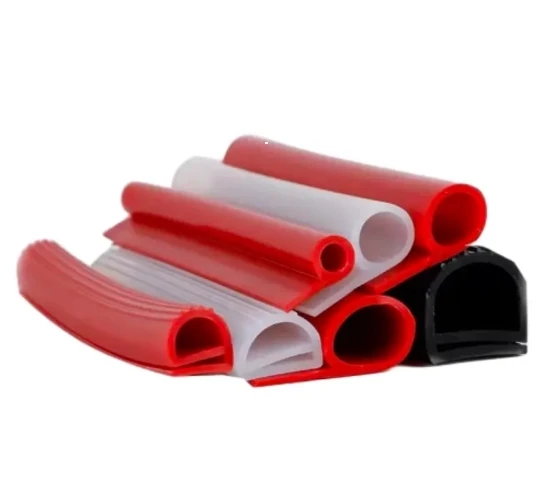Telephone: +8618730949119
E-mail: 1299343081@qq.com
Jan . 26, 2025 02:52
Back to list
garage door weather seal types
Navigating the numerous types of garage door weather seals available can be daunting for both homeowners and commercial facility managers. Understanding the different types, their benefits, and suitable applications forms the cornerstone of selecting the right product. With my extensive background in the industry and hands-on experience, I am well-equipped to guide you through this process to ensure you make an informed decision that enhances your property's durability and energy efficiency.
Weatherstripping Seals These seals come in various materials such as rubber, vinyl, and foam, serving as fillers around the edges of the garage door. Their primary function is to curb heat exchange and ward off dust, insects, and airborne contaminants. Available in both adhesive-backed and nail-on versions, choosing the right type depends heavily on the door's material and the prevalent climate. Practitioners in the field often stress the importance of choosing high-density, UV-resistant weatherstripping materials to prolong effectiveness and maintain elasticity over time. For garage doors crafted from wood or those situated in sun-drenched locales, these attributes help in staving off premature degradation due to repeated exposure to harsh conditions. Brush Seals Featuring rows of bristles, brush seals are adept at deterring pests and, by virtue of their design, allow for small mechanical flexibilities where typical seals might wear out. Brush seals are particularly beneficial in commercial garages where frequent door activity necessitates durable, adaptable sealing solutions. Feedback from commercial operators underscores that while brush seals are often overlooked in residential applications, they provide superior performance in high-traffic environments, such as auto repair shops and warehouse operations. Final Considerations Selecting a garage door weather seal extends beyond simply purchasing the right product. It involves evaluating local climate challenges, understanding the structural needs of your garage, and considering any specific storage requirements that might demand enhanced environmental control. A thorough assessment with a professional can illuminate these variables, ensuring the seal type chosen delivers maximum benefit. Harnessing my extensive field expertise, it is recommended that a proactive approach to annual inspections and maintenance is adopted. Checking for wear and tear, ensuring the snug fit of seals, and replacing them promptly when signs of damage appear can markedly reduce long-term costs and bolster protective functions. An integrated strategy that involves regular monitoring, timely replacements, and correct installations will safeguard your investment, thereby enhancing the longevity and functionality of your garage space for years to come.


Weatherstripping Seals These seals come in various materials such as rubber, vinyl, and foam, serving as fillers around the edges of the garage door. Their primary function is to curb heat exchange and ward off dust, insects, and airborne contaminants. Available in both adhesive-backed and nail-on versions, choosing the right type depends heavily on the door's material and the prevalent climate. Practitioners in the field often stress the importance of choosing high-density, UV-resistant weatherstripping materials to prolong effectiveness and maintain elasticity over time. For garage doors crafted from wood or those situated in sun-drenched locales, these attributes help in staving off premature degradation due to repeated exposure to harsh conditions. Brush Seals Featuring rows of bristles, brush seals are adept at deterring pests and, by virtue of their design, allow for small mechanical flexibilities where typical seals might wear out. Brush seals are particularly beneficial in commercial garages where frequent door activity necessitates durable, adaptable sealing solutions. Feedback from commercial operators underscores that while brush seals are often overlooked in residential applications, they provide superior performance in high-traffic environments, such as auto repair shops and warehouse operations. Final Considerations Selecting a garage door weather seal extends beyond simply purchasing the right product. It involves evaluating local climate challenges, understanding the structural needs of your garage, and considering any specific storage requirements that might demand enhanced environmental control. A thorough assessment with a professional can illuminate these variables, ensuring the seal type chosen delivers maximum benefit. Harnessing my extensive field expertise, it is recommended that a proactive approach to annual inspections and maintenance is adopted. Checking for wear and tear, ensuring the snug fit of seals, and replacing them promptly when signs of damage appear can markedly reduce long-term costs and bolster protective functions. An integrated strategy that involves regular monitoring, timely replacements, and correct installations will safeguard your investment, thereby enhancing the longevity and functionality of your garage space for years to come.
Latest news
-
Under Door Draught Stopper: Essential ProtectionNewsJul.31,2025
-
Garage Door Seal and Weatherstrips for ProtectionNewsJul.31,2025
-
Edge Banding Tape for Perfect EdgesNewsJul.31,2025
-
Table Corner Guards and Wall Corner ProtectorsNewsJul.31,2025
-
Stair Nose Edging Trim and Tile Stair SolutionsNewsJul.31,2025
-
Truck Bed Rubber Mats for Pickup BedsNewsJul.31,2025
-
Window Weather Stripping for Noise ReductionNewsJul.29,2025